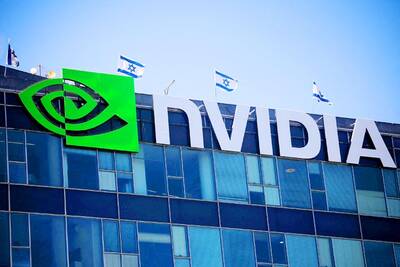Acer Inc (宏碁) yesterday said there was a likelihood it would launch a new smartphone powered by Intel Corp’s Atom chip by the end of this year, in a sign of renewed cooperation.
The remarks came after the world’s No. 4 PC brand suddenly scrubbed a secretly arranged press conference last month to unveil the “Intel inside” mobile phone with local telecoms operator Chunghwa Telecom Co (中華電信), a reliable source said. Acer did not confirm.
It would make Acer the third company in the world after China’s top brand Lenovo Group Ltd (聯想) and Motorola Mobility Holdings Inc to offer smartphones outfitted with Intel chips as the companies, which made their name in the PC world, share the same ambition of expanding into smartphones to offset the stabilizing growth of the PC market.
“I think there is the chance [of seeing that happen],” Peter Shieh (謝金全), a vice president of Acer’s corporate account business division, told reporters when asked if the company planned to launch a new smartphone running Intel chips by the end of this year.
Shieh declined to provide more details.
Smartphones running Microsoft Corp’s new Windows 8 operating system are already in the pipeline for sale sometime next year, Shieh said.
This year, all six models launched by Acer run the Android system, supported by Google Inc, Shieh said.
Next year, Acer plans to introduce about six new phones and aims to double unit sales to 200,000 in the home market, from 100,000 units this year, Shieh said.
That would be a small portion of Acer’s bigger plan to sell 2 million cellular phones around the globe — as it forecast earlier this year.
“The trend is very clear, that the smartphone is becoming a major device for people to process data on the go,” Shieh said.
Global smartphone shipments are expected to expand to 567 million units this year and reach more than 1 billion in 2016, compared with less than 500 million units last year, according to market researcher NPD DisplaySearch’s tallies released last month.
Acer yesterday launched three new smartphones, including one upscale model code-named CloudMobile S500 that features a personal cloud service for users to temporarily save and share their pictures and data via a remote server.
The CloudMobile S500 went on sale in Europe last month in collaboration with telecoms operator Orange, as well in Australia, Thailand and some other Southeast Asian countries, Acer said.
The firm is also in talks with Chinese telecoms operators to sell the phone in China as well, Shieh said.
Shieh also said the company was diversifying its phone suppliers for various reasons, including supply chain issues, cost efficiency and developing better products for local users.
Acer has added a new Chinese handset company to its existing partners, Taiwan’s Qisda Corp (佳世達) and Compal Communications Inc (華寶), Shieh said.

Micron Memory Taiwan Co (台灣美光), a subsidiary of US memorychip maker Micron Technology Inc, has been granted a NT$4.7 billion (US$149.5 million) subsidy under the Ministry of Economic Affairs A+ Corporate Innovation and R&D Enhancement program, the ministry said yesterday. The US memorychip maker’s program aims to back the development of high-performance and high-bandwidth memory chips with a total budget of NT$11.75 billion, the ministry said. Aside from the government funding, Micron is to inject the remaining investment of NT$7.06 billion as the company applied to participate the government’s Global Innovation Partnership Program to deepen technology cooperation, a ministry official told the

Taiwan Semiconductor Manufacturing Co (TSMC, 台積電), the world’s leading advanced chipmaker, officially began volume production of its 2-nanometer chips in the fourth quarter of this year, according to a recent update on the company’s Web site. The low-key announcement confirms that TSMC, the go-to chipmaker for artificial intelligence (AI) hardware providers Nvidia Corp and iPhone maker Apple Inc, met its original roadmap for the next-generation technology. Production is currently centered at Fab 22 in Kaohsiung, utilizing the company’s first-generation nanosheet transistor technology. The new architecture achieves “full-node strides in performance and power consumption,” TSMC said. The company described the 2nm process as

Shares in Taiwan closed at a new high yesterday, the first trading day of the new year, as contract chipmaker Taiwan Semiconductor Manufacturing Co (TSMC, 台積電) continued to break records amid an artificial intelligence (AI) boom, dealers said. The TAIEX closed up 386.21 points, or 1.33 percent, at 29,349.81, with turnover totaling NT$648.844 billion (US$20.65 billion). “Judging from a stronger Taiwan dollar against the US dollar, I think foreign institutional investors returned from the holidays and brought funds into the local market,” Concord Securities Co (康和證券) analyst Kerry Huang (黃志祺) said. “Foreign investors just rebuilt their positions with TSMC as their top target,

H200 CHIPS: A source said that Nvidia has asked the Taiwanese company to begin production of additional chips and work is expected to start in the second quarter Nvidia Corp is scrambling to meet demand for its H200 artificial intelligence (AI) chips from Chinese technology companies and has approached contract manufacturer Taiwan Semiconductor Manufacturing Co (TSMC, 台積電) to ramp up production, sources said. Chinese technology companies have placed orders for more than 2 million H200 chips for this year, while Nvidia holds just 700,000 units in stock, two of the people said. The exact additional volume Nvidia intends to order from TSMC remains unclear, they said. A third source said that Nvidia has asked TSMC to begin production of the additional chips and work is expected to start in the second